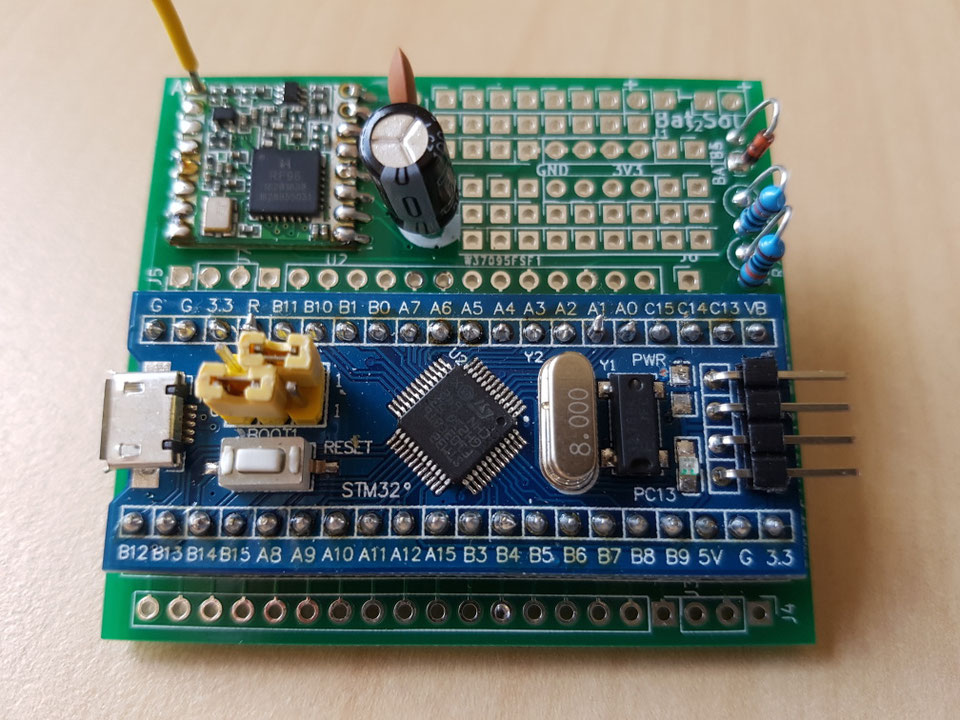Solar power

The node is powered with a small 3.6V NiMH rechargable battery, the type often used in cordless home phones.
A small 5V solar panel is connected with a diode to the battery and (trickle) charges it. The diode is needed to prevent a reverse discharge current through the solar panel when it is dark. The type of diode is not critical, you can use e.g. a BAT85 Schottky type, but a regular 1N400x will also do the job.
You can also use regular NiMH penlite cells in a battery holder. It is best to use 3 cells (3.6V). A larger number of cells (eg 4: 4.8V) increases the chance of unbalanced charge in the individual cells. The solar panel should be at least 5V to charge a 3 cell battery or 4V to charge a 2 cell battery.
The size of the battery and the solar panel depends on the power consumption of your node and your location. If you're located about half way between a pole and the equator, e.g. in The Netherlands (52°N) you'll have to survive the two darkest winter months: december and january in the Northern hemisphere. Closer to a polar circle you'll need sufficient capacity in your battery for 4 dark months.
A node which consumes 0.25mA on average will do fine with a battery capacity of 600 mAh. This would in theory allow operation in the dark for 600 / 0.25 = 2400 hours, i.e. 100 days. This is optimistic, cheap phone batteries will be closer to 60 days, but high quality Eneloop cells will be quite close to the rated capacity. The Eneloop Lite cells are a good choice if you don't need the capacity of normal Eneloops. The Lite cells have a reduced capacity, but they are cheaper and lighter than the normal Eneloops and even more robust than normal Eneloops. They will tolerate continuous charging (which we will not do in our solar setup) and complete discharge and still be in good shape when you've already lost interest in your nodes for a long time :-)
There is no point in using Eneloop-Pro cells in these setups, you don't need the extra capacity and they are slightly less robust.
I suggest using a 100mA solar panel for a 2000mAh AA cell setup (when you're close to the polar circle or your node uses about 1mA) and a 30mA solar panel for a 600mAh AAA cell setup. This C/20 ratio will not overcharge the cells and be sufficient to keep the cells close to 100% charge during the spring/summer/autumn months and survive the winter months.
Note that 600 mAh for a 0.25mA node is an estimate on the safe side. This will work for solar cells at a bad location, e.g. on the shadow side of a building. A higher power consumption is in many situations no issue, but you'll have to wait for the winter months to verify your setup.
This method I've used in various projects for the last years. See the green (ESP8266 - 3 AA normal NiMH cells), dark orange (STM32 - 600mAh phone accu) and light blue (STM32 - 2 AAA Eneloop Lite cells) lines which show the battery voltages.
Live Link:












